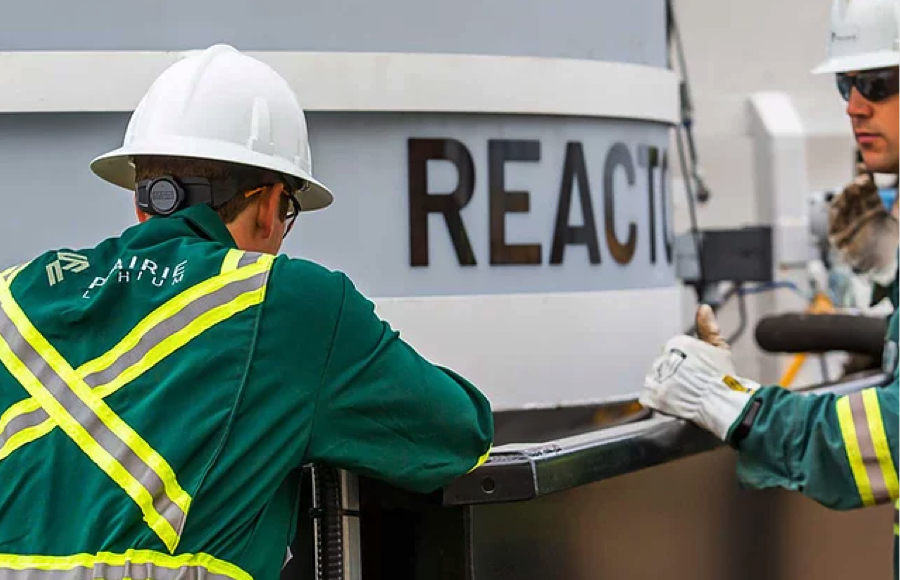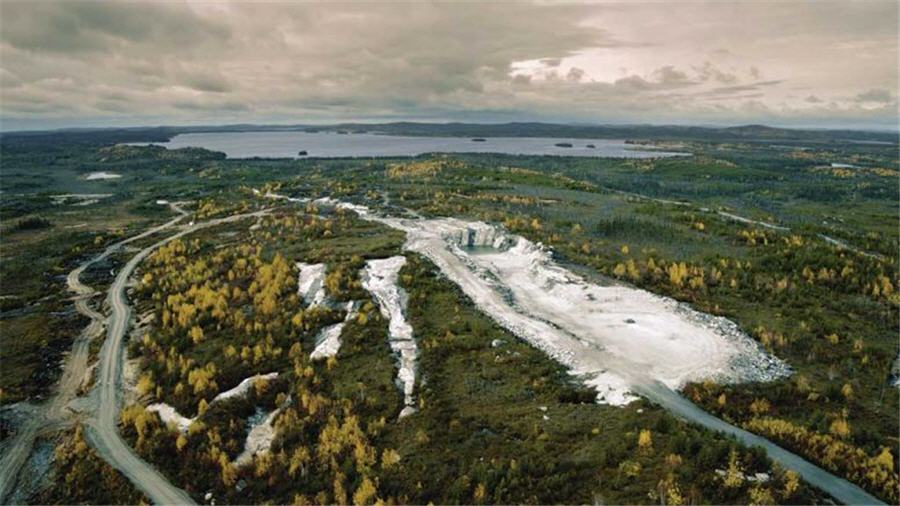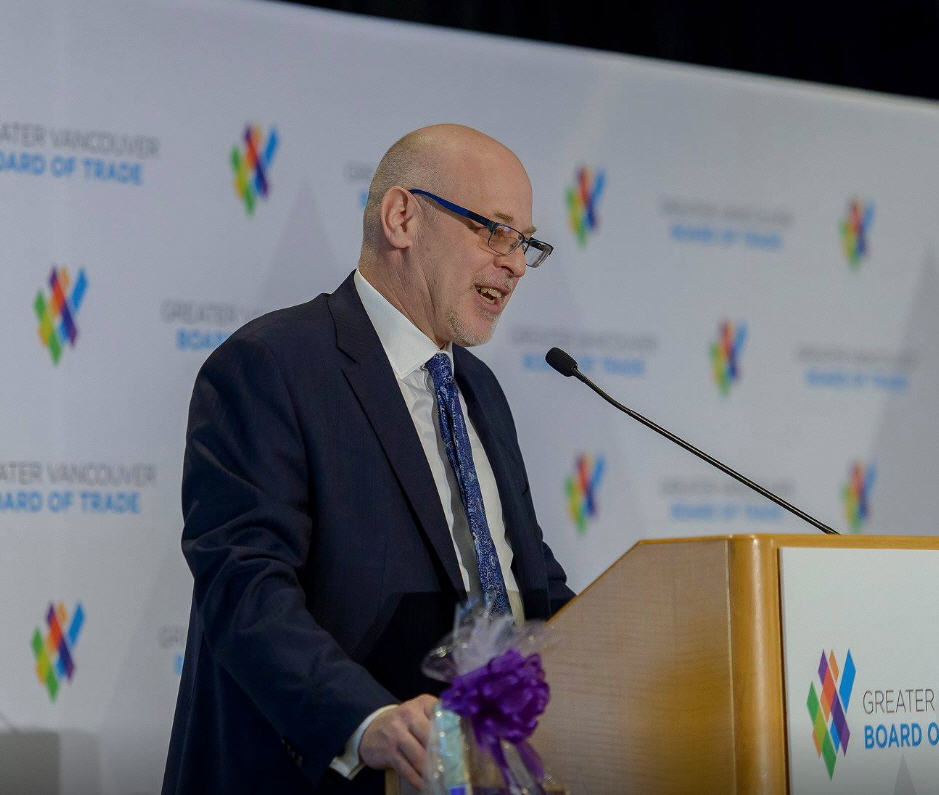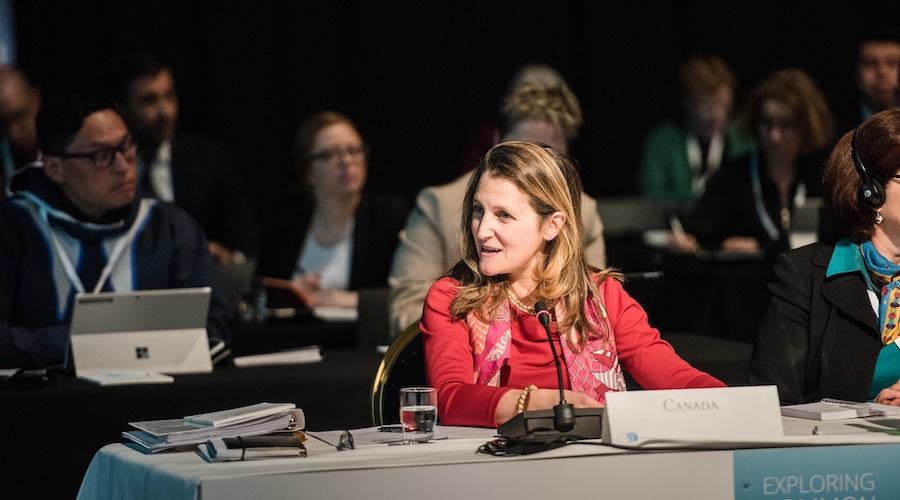
Canada is still grappling with an acute crisis in our hospitals stemming from the COVID-19 pandemic while the slow-moving quagmire caused by the country's aging population threatens to become a larger disaster.© Peter J. Thompson/National Post
Canada’s health-care system is under siege. The country is still grappling with an acute crisis in our hospitals stemming from the COVID-19 pandemic while the slow-moving quagmire caused by the country’s aging population threatens to become a larger disaster. Can our system handle it? This joint five-part series produced by the National Post and The Hub looks deep into the world of Canadian health care, not just to identify problems, but to offer solutions for the future.
Efe Türker received his third dose of the COVID vaccine in February and quickly realized he was in for a rougher bout of side effects than he endured from his first two shots.
Türker developed a fever in the evening that got progressively more severe until he fell into a fitful sleep. At 5 a.m., he woke up, shivering in a pool of his own sweat. When he went to wash his face, Türker lost consciousness and collapsed in his apartment, banging his head on the floor as he went down. His dog found him lying there a few minutes later, and was able to wake him up.
Head trauma can result in anything from an uncomfortable bruise, an excruciating concussion or a deadly brain hemorrhage. But Türker did not seek serious medical attention, or even a checkup. Not worth the trouble, from his perspective.
“There’s absolutely no way you see a doctor at any logical time in Victoria, be it a general practitioner, or anything,” says Türker. “I have never seen a doctor since I arrived in Victoria.”
Medical Meltdown
A shortage of practitioners, and laborious wait times, are not a new problem in Canada, but they are especially acute in Greater Victoria, where news reports of walk-in clinics closing down have become a frequent occurrence. Walk-in clinics in the Victoria-proper neighbourhoods of James Bay , Cook Street , as well as the nearby municipalities of Colwood and View Royal , have closed, leaving as many as 3,000 more people per closure without a go-to medical facility.
An estimated quarter of Greater Victoria’s nearly 400,000 residents did not have a family doctor in February. In April, the wait times to see a doctor at a walk-in were the highest in Canada, at 161 minutes .
The story is beginning to look the same across the country. In Hamilton , the city’s hospitals are short 675 workers, in Toronto , paramedics are practising “hallway medicine” in the ERs and in Airdrie , just outside Calgary, staffing shortages are keeping the urgent care centre closed overnight for at least the next eight weekends. Local news broadcasts across the country are packed with stories about wait times, staffing shortages and the frustration these problems are causing Canadians.

Patients wait in hallways due to an at-capacity emergency room during the pandemic at the Humber River Hospital during the COVID-19 pandemic in Toronto on Tuesday, January 25, 2022.
Victoria is no longer a cautionary tale, but a microcosm of the rest of the country. Especially frustrating is that Canada once had one of the highest ratios of physicians to population in the developed world.
Canada’s universal, taxpayer-funded, health-care system remains a pillar of national pride, but when compared to the country’s peers in Western Europe, it now ranks near the bottom of the pack. The favourite solution of the federal government and provincial premiers has been to boost funding, but it has created an expensive system that consistently underperforms in delivering quality health care when compared to similar countries.
The Commonwealth Fund’s 2021 report comparing the health-care systems of 11 developed countries, put Canada in 10th place, just ahead of the United States. Canada placed 10th in equity and health-care outcomes, 9th in access to care, 7th in administrative efficiency, and 4th in care processes.
According to the World Health Organization’s pre-pandemic rankings of global health systems in 2015, Canada ranked 30th out of 190 countries. France is ranked number one, while the United States comes in at 37, making Canada out as a lubber, rather than a leader, in providing health care for its citizens among its peers.
According to a 2015 Commonwealth Fund Report , 38 percent of Canadians felt the system worked well, 51 per cent wanted fundamental change, and 10 per cent believed it needed to be totally rebuilt. It would be quaint to still believe nearly 40 per cent of Canadians feel the system worked well in 2022.
As waiting times continue to lengthen , and the number of doctors plummets in many of the country’s leading cities, both the health-care system, and its cherished status among Canadians, is waning.
Shortages
Camille Currie is the organizer and founder of BC Healthcare Matters , a grassroots advocacy group that emerged as a result of the province’s medical shortages. Currie says doctors in B.C. face several unique challenges when compared to the rest of the country.
“We have the highest cost of living in Canada,” said Currie in an email. “Our family doctors can’t afford to stay in business here while making the lowest median salary in the country, while 30-50 percent of their pay goes to overhead costs, which are higher here than anywhere else due to our cost of living.”
In 2019, B.C. doctors were described by the CBC as being paid the third-least after their counterparts in Nova Scotia and Newfoundland. Victoria is annually ranked as one of Canada’s most expensive cities in the country, with higher costs for everyday needs like groceries and energy . High commercial rents are driving long standing businesses out of the city’s downtown.
Currie says the province continues to fund urgent primary care centres, but they are being used as walk-in clinics due to the shortages.
“The people using these facilities are citizens without family doctors and without access to walk-in clinics,” says Currie. “The B.C. government has wasted millions of dollars on these facilities, and still claims they are also the answer to our family doctor crisis.”
In February, the provincial government committed $57 million for 10 more urgent and primary care centres in the province by 2025, increasing the total number in the province to 50. Just six will be on Vancouver Island.
“Overhead is higher than anywhere else, doctors can only bill the government for $31 per patient, the lowest in the country,” says Currie. “Doctors can only see a maximum of 50 patients a day and can’t bill for countless tasks that use up their time, like checking labs, writing referrals, doing full physical exams.”
Currie also says that while there is demand, the supply of doctors is insufficient to meet it, and B.C. cannot attract more physicians without change. In October, the B.C. government announced a plan to raise the salaries of doctors in the province by over $100,000 per year, which some doctors labelled a “seismic shift.”
The big fix: Canada’s health system is melting down. Is ‘liberalized’ care the answer?
Kelly McParland: How alarmism keeps health care in crisis
Federal and provincial politicians in Canada often respond to surges of complaints regarding health care by promising to funnel millions or billions of dollars to the provinces to help alleviate the shortages. Currie says this does not solve the issue.
“Our problem isn’t a federal funding issue, our problem is an effective use of health care funds,” says Currie. “Alberta has a similar health ministry budget as B.C., so how are they able to provide for all their citizens and we aren’t?”
For many Albertans, however, the situation is not optimal either. Alberta’s residents have complained about their own long wait times, and many have opted for out-of-province treatment.
B.C. continues to place highly in provincial health-care rankings , largely due to the overall health of the population. However, that could change, especially as the population of Canada continues to age , and current trends continue.
Shirley Bond is the B.C. Liberal MLA for Prince-George Valemount, and once served as the minister of health during her party’s 16 years in government from 2001 to 2017. With the B.C. NDP now governing the province, Bond is the health care critic, and is aware of the pressures facing walk-in clinics, such as the costs of overhead.
Regarding federal funding, she says it continues to play an important role in improving B.C. health care, especially in the province’s more rural regions. Her riding of Prince George-Valemount, located almost 800 kilometres away from Vancouver, is serviced by the University Hospital of Northern British Columbia and lacks many vital facilities.
“It is a regional centre, and we have no cardiac care,” says Bond. “We need enhanced surgery, surgical capacity, we need significant investment in my community.”
Nonetheless, Bond acknowledges the need to re-examine the health-care system in B.C.
“We do need additional resources, and we also need to look at how we utilize those resources and are there ways that we need to consider a more innovative approach,” says Bond. “We certainly need to have more dialogue with the people who actually can operate the system, they’re the experts.”
Credentialing
Bond says she is looking at the Ontario government’s recently announced plans to revamp the province’s health-care system, which includes additional training spots for nurses , and removing barriers for foreign-trained medical professionals to begin practising.
Ontario’s plan for credentialing foreign doctors has been slow and controversial , but Bill Tholl says the provinces can provide templates for each other when formulating policy, due to Canada’s decentralized health-care system.
“Historically, one of the big upsides of having a decentralized system is we learned from one province to another,” says Tholl. “It’s kind of a natural experiment, in fact, our national Medicare program might be referred to as kind of a provincial experiment in my home province of Saskatchewan.”
Tholl is one of Canada’s leading health-care policy analysts, an author, and has served on numerous health care-related committees and organizations.
“I’d say the fundamentals are still pretty darn good, but the rest of the world is changing and we’re not keeping up,” says Tholl, regarding Canada’s medical delivery. “We really haven’t taken up the challenges of change very well in the Canadian health-care system.”
Tholl says many of the problems with Canadian health care can be traced back to the 1990s. Following the 1980s, Canada was racked with fiscal chaos, chronic budget deficits and inflation. It prompted a major policy shift towards balanced budgets and getting government spending under control.
Tholl says the federal government prioritized costs over care as part of its program of austerity and fiscal rebalancing, resulting in a reduction of enrolments in medical and nursing schools, by respective rates of 15 per cent and 50 per cent.
“I know it sounds odd to say, but we’re still recovering from that shock to the system,” says Tholl.
Tholl says that while the federal government subsidizes both undergraduate and residency training programs, they remain below their pre-1990s ratios, keeping not only the number of homegrown surgeons and family doctors capped, but also residency training spots.
When asked why the federal government would not simply increase the number of spots to generate more medical professionals, Tholl says the pandemic may spur those changes.
“I think they’re realizing just how much the pendulum swung too far in terms of constraining physician supply and nursing supply,” says Tholl. “God only knows the pandemic has shown just how fragile….how we were operating beyond the capacity limits of the currently available doctors and nurses.”
Even if changes were to be made, Tholl says it could take anywhere from six to 12 years for new professionals, such as cardiac surgeons, to enter the system.

Nurses, doctors, and respiratory therapist prepare to intubate a COVID-19 patient as Omicron puts pressure on Humber River Hospital in Toronto, Ontario, Canada January 20, 2022.
Tholl cites the “South African Solution” as a way to help alleviate health-care shortages in the short term. It’s a policy developed by Saskatchewan’s government to enable the province to effectively lure South African doctors, who undergo similar training to their Canadian counterparts and push them into the province’s medical workforce. In 2016, more than half of Saskatchewan’s doctors had been trained outside Canada, with most coming from South Africa, Nigeria, and India.
Immigrant doctors would be a welcome addition to Canada’s medical workforce in 2022, as many medical professionals across Canada are retiring due to burnout from the pandemic, lessening the already short supply.
“You’re seeing a lot of concern in the health-care sector about the ‘Great Resignation,’ that those that can’t afford it, those that have had enough,” says Tholl.
Tholl mentions the Ontario government is resorting to awarding thousands of dollars in individual bonuses to nurses to remain on the job. The purpose is to stave off resignations and retirements as a short-term fix until nursing schools can begin producing more graduates to replace the retiring ones.
However, Tholl points out that medical school is still an expensive and a highly competitive process.
“It’s always been competitive, but I suspect it’s more competitive now than it’s ever been,” says Tholl.
Tholl explains that the competition continues past medical school, and affects how graduates can obtain residency training spots. The already-subsidized cost of medical school cost $17,000 CAD per year on average in 2021, and nearly $30,000 per year in Ontario.
Tholl says that once students graduate, often with significant debt, they go into specializations that pay more than a general practitioner, such as becoming a dermatologist. While dermatology may be a huge help for acne-ridden teenagers, they do not surgically repair injured knees or perform heart transplants.
Federal funding
“If you got in a car and drove yourself from St. John’s, Newfoundland, all the way to Victoria, British Columbia, you would find yourself in 10 very different provinces with 10 different realities,” says Nadeem Esmail, a senior fellow at the Fraser Institute. “The decentralization of health care and giving the provinces the ability to determine health-care policy allows them to tailor their system to their provincial realities.”
Like Tholl, Esmail says the decentralized approach could allow the provinces to individually experiment with different health-care policies being undertaken around the world, if only the federal government would give more autonomy to the provinces.
“The involvement of the federal government is in fact, holding the provinces back from setting optimal health-care policy or ideal health-care policy for the population,” says Esmail.
Esmail says the Canada Health Act is limiting policy innovation because it governs what provinces can and cannot do in terms of health-care policy in return for federal health transfer payments. He says that the provinces are dominated by government-run monopolistic hospitals, and a health-care system that precludes any cost-sharing of user fees.
“We’re not able to encourage more informed decision-making among those who can afford it,” says Esmail. “We’ve trapped ourselves in this very ineffective set of health-care policies as a result of federal interference and provincial policy making.”
One common practice of federal and provincial governments when addressing health care is to pledge further funding, especially during election seasons. Like Camille Currie, Esmail does not consider federal funding to be the problem, or the solution.
In March, Ottawa announced an additional $2 billion would be delivered to the provinces to help alleviate pandemic-related medical backlogs. This is on top of the $4.5 billion that was already given to the provinces during the pandemic to assist in handling the crisis.
Bill Tholl says it can’t always be known if the provinces are actually spending the transfers on health care as intended. The federal government and the premiers are currently locked in a dispute over future transfers, with Ottawa demanding guarantees it be spent on healthcare.
“It’s literally a transfer from a federal banking account that goes across the street to a series of provincial accounts,” says Tholl. “With no accountability attached to those funds, they become general revenue for the provinces, indistinguishable from all the taxes that the provinces raised.”
Tholl says the transfer payments not only perpetuate problems in the health-care system, but also widened interprovincial disparities in aspects like waiting times, and the ability to attract doctors.
“I think we have to focus on what is important here, and that is delivering the best possible universal access health-care system to the population,” says Esmail. “In that regard, allowing the provinces to experiment, allowing the provinces to learn from one another, to try policies that have been successful elsewhere has incredible power.”
Esmail says that Canadians want a comprehensive, affordable and universal health-care system, but the way it has been structured ties the provinces to a system that monopolizes the delivery of both medical treatment and health-care insurance.
“This disallows cost-sharing for universally accessible services, which is unfortunate because those are the very policies employed by 100 per cent of the developed world’s most effective, highest-performing universal access health-care systems,” says Esmail.
Esmail advises understanding what countries like Australia , France , Germany , or Japan have done, all of whom deliver high quality, but faster health care at lower costs than in Canada, while allowing for cost-sharing between public and out-of-pocket spending.
In France, for example, state-run health care remains the backbone of medical delivery, while the smaller private options help to alleviate the pressure of costs and backlogs.
“It’s private alternatives to the publicly funded health-care system, or to the government-run health-care system,” says Esmail. “Allowing that project competition in encouraging more informed decision making through cost sharing creates a better universal access health-care system for everyone.”
Private alternatives
Efe Türker says going back to Turkey would be a preferable option if he needs medical attention, rather than stewing on waiting lists in Victoria, or seeking private treatment elsewhere.
“It is easier, simpler, and in most cases cheaper, for me to literally buy a ticket, fly across the world to my home country, to see a doctor and get free treatment and fly back,” says Türker.
One of Türker’s friends has made the trip back to Turkey after being injured, and received both treatment and physiotherapy before his scheduled appointment in Canada. When Türker is sick and needs medical advice, he calls his uncle, who is a practising physician in Turkey.
“It would get diagnosed from an 11-hour time zone away,” says Türker. “This shouldn’t be the case for anyone.”
The solution may be found by a nationwide imitation of a successful provincial health-care policy innovations, which was the genesis of Canada’s universal system in the first place. Whether the new solution is re-funding medical and nursing schools, nationalizing the South African Solution or expanding access to private alternatives, boosting provincial autonomy on health-care policy, or all of those combined, the headlines across the country show that Canadians need solutions fast.
“At the end of the day, provinces are too busy shuffling deck chairs on the Titanic, implementing small adjustments here and there without recognizing, or at least while deliberately avoiding, the larger picture for political reasons,” says Esmail.











